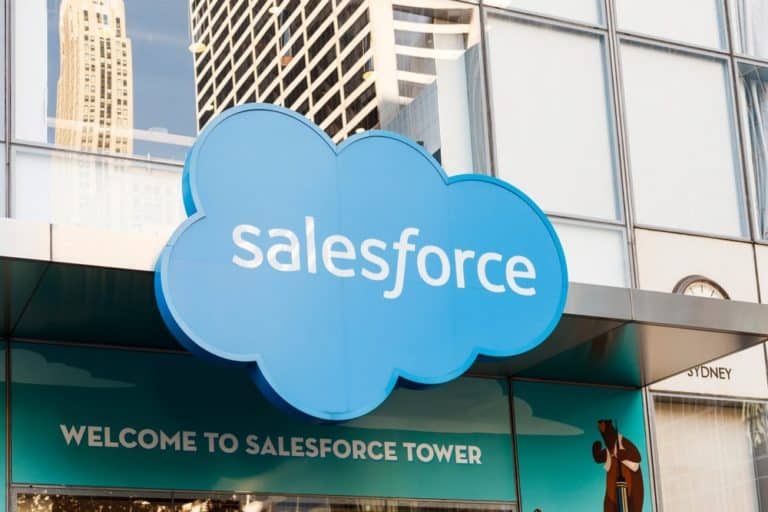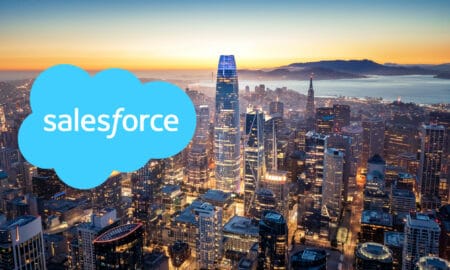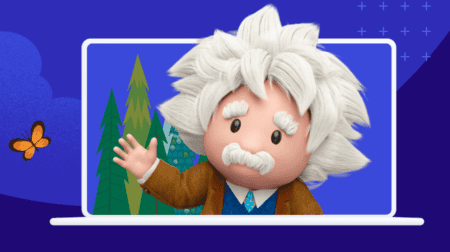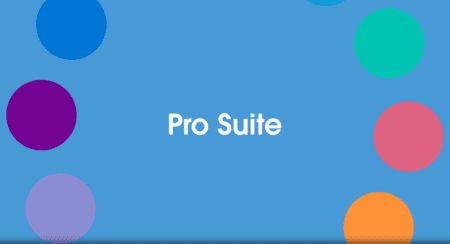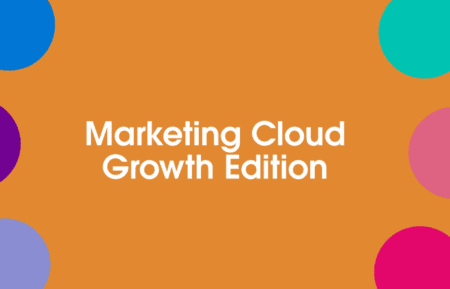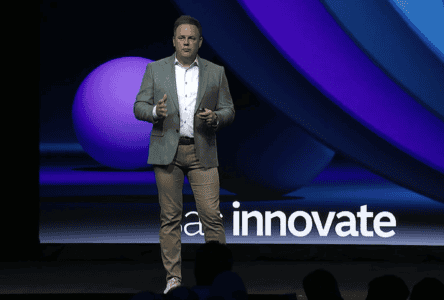MuleSoft, MapAnything, Tableau… those who consider Salesforce’s recent acquisition path can legitimately ask themselves to what extent the CRM flag still covers the load. “You are indeed selling us a bit short”, laughs Jo Buvens, Senior Regional Vice President EMEA CPQ & Pardot at Salesforce. However, the customer experience remains central to everything the software giant does.
We talked to Buvens during the last Salesforce Basecamp in Brussels. “Many people automatically link the name to sales, but the Sales Cloud is actually just one application built on our platform. Our Service Cloud, for example, is used as much as Sales Cloud worldwide.”
More than sales
In addition to sales and service, Salesforce also has Marketing Cloud and Commerce Cloud in its portfolio. Furthermore, the software specialist offers its own development platform to build (low code) business applications, Einstein Analytics helps to make decisions based on AI, and thanks to the acquisition of MuleSoft, it has its own integration platform to interconnect systems. The acquisition of BI specialist Tableau and the development of its own blockchain platform are the most recent additions to the list of activities.
If you think like the classic Salesforce of twenty years ago, you can’t meet new needs.
“Just forget about CRM,” says Carmina Coenen, Director Solutions Engineering at Salesforce. “CRM has a fixed definition, and that’s just what you don’t want. You don’t know in advance what your customers want, and you have to evolve constantly, according to their needs.”
At Basecamp, for example, we’re listening to a presentation by shoe store Torfs, who used Salesforce’s e-commerce solution to respond to new competition from pure online players such as Zalando or Amazon. “If you think like the classic Salesforce of twenty years ago, you can’t meet those needs,” says Coenen. “You have to listen to what the customer wants and quickly identify and respond to the impulses they bring from their ease of use to other players, not only in their own sector but also outside it.
Seamless customer experience
At its core, Salesforce delivers the technology to make the customer experience as seamless as possible and facilitates an ecosystem and platform to deploy that technology. “We want the same experience of buying a book on Amazon, but in the workplace,” explains Buvens. “That’s where we can help the digital transformation. Many organizations are working on this. It’s all about a customer-focused experience, both in a B2C, B2B and B2B2C environment.”
The same experience of buying a book on Amazon, we want to have in the workplace.
An example shows what such a seamless experience, supported by Salesforce, can look like. Take a cafe that uses refrigerators filled with fresh drinks. If a refrigerator breaks down, the operator wants to have it repaired as soon as possible, so his customers won’t be served a lukewarm drink. He contacts the maintenance company, where the call center employee immediately has all the relevant information from the Service Cloud thanks to the telephone number. The employee can use the same tool to find out which technician is nearby to carry out the repair the quickest.
Or you could go a step further and use a sensor to monitor the condition of the refrigerator proactively. If the voltage is too high, a technician can be sent with spare parts as a preventive measure. Such predictive maintenance means that a lot of data has to be collected and made clear. You need to know who owns the refrigerator, what the status of the appliance is, which technician is nearby, and so on. In such scenarios, Buvens sees a possible role for the takeover of Tableau in order to create visibility in big data.
Blockchain
Finally, together with Buvens and Coenen, we discussed the blockchain platform that Salesforce announced last month in more detail because the link with classic CRM is not immediately clear either. “This was something that was really in demand with a large part of our customers”, Buvens makes a strong case.
Salesforce’s interest in blockchain is based on the idea that, as a company, you are not solely responsible for the experience of your customers, but are often dependent on different partners and data.
Blockchain is going to have a huge impact on the supply chain.
“Suppose that you, as a chocolatier, want to demonstrate to the customer that your chocolate has been created in an ethical way”, Coenen illustrates. “Then you can map out all the different partners that are part of the production process and connect them to a blockchain network. This is the only way to inform the customer in a completely transparent and reliable way about the origin of the product.”
Full life cycle
In short, blockchain can help to provide unambiguous insights into the entire life cycle of a product. This is often impossible today because each party involved has its own systems and data to carry out its own part of the process. The chocolatier has to trust his supplier to keep to the price agreements for the cocoa farmers, but there is usually no real transparency.
“There is a need for companies and consumers to know better what is behind a product. That is the added value of blockchain,” says Coenen. “We offer our customers the tools to set up such a network together with their partners. We translate the complex blockchain technology into a low code platform that is accessible to everyone”.
“Just as you can buy fair-trade bananas today, a segment of consumers will emerge that expects you to be able to offer this transparency,” adds Buvens. “This will have a huge impact on the supply chain. Not within ten years, but much faster.”
